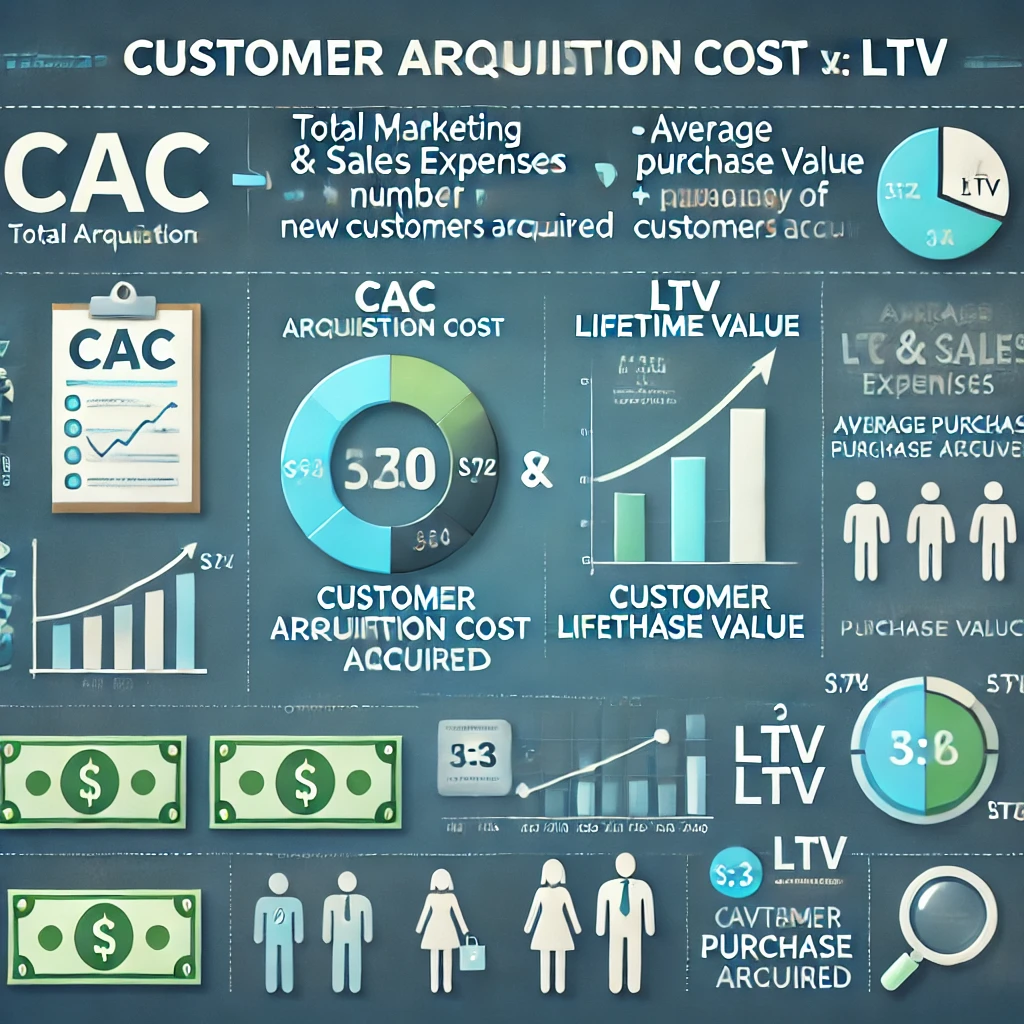Why High Customer Acquisition Cost (CAC) and Low Lifetime Value (LTV) Are Killing Startups – And How to Fix It
One of the biggest challenges startups and entrepreneurs face in digital marketing is balancing Customer Acquisition Cost (CAC) and Customer Lifetime Value (LTV). If acquiring a customer costs more than what they bring in revenue over time, the business becomes unsustainable. This is a silent killer for many startups that invest heavily in marketing but struggle to retain and maximize customer value.
But the good news? With the right strategies in place, businesses can reduce CAC, boost LTV, and build a profitable, long-lasting brand. In this blog, we’ll explore:
Why high CAC and low LTV are dangerous
Common mistakes startups make
Proven strategies to reduce CAC and increase LTV for long-term success
The role of SEO, web development, AI, and automation in scaling a business
The power of data-driven marketing strategies to improve decision-making
Understanding CAC and LTV
What is Customer Acquisition Cost (CAC)?
CAC is the total cost of acquiring a new customer, including:
Advertising spend (Google Ads, Facebook Ads, etc.)
Content marketing costs
Sales team expenses
Any tools or software used for lead generation
Formula: CAC = Total Marketing & Sales Expenses ÷ Number of New Customers Acquired
What is Customer Lifetime Value (LTV)?
LTV is the total revenue a business earns from a customer over their relationship with the company.
Formula: LTV = Average Purchase Value × Purchase Frequency × Customer Lifespan
The Ideal Ratio:
For a business to be profitable, the LTV:CAC ratio should be at least 3:1. This means that for every $1 spent on acquiring a customer, they should generate $3 or more in revenue.

Why High CAC and Low LTV Are a Major Problem
Unsustainable Growth
If CAC is too high, businesses burn cash faster than they make it. This is why many startups rely on investor funding but still struggle to turn a profit.
Profitability Delays
If it takes too long to recover acquisition costs, cash flow suffers, making it hard to reinvest in marketing and operations.
Paid Ads Dependency
Many startups rely heavily on paid ads, but without a solid retention strategy, they keep spending without seeing long-term customer value.
Competitive Pressure
If your competitors have a better CAC-to-LTV ratio, they can afford to scale faster while you struggle to break even.
Customer Churn Issues
Acquiring customers is only half the battle—if they don’t return, you constantly need new customers to sustain revenue.
Impact on Long-Term Business Growth
Without improving the CAC-to-LTV ratio, businesses struggle to reinvest in new opportunities, innovate, or scale successfully. A sustainable business model requires not just acquiring customers but keeping them engaged and increasing their lifetime value.
Common Mistakes Startups Make
Relying Too Much on Paid Ads Without Organic Growth
Ads drive traffic, but without SEO solutions for growing businesses, content marketing, and brand authority, startups keep paying for each new customer.
Ignoring Customer Retention & Engagement
Many businesses focus only on first-time sales and neglect retention strategies like email marketing, loyalty programs, and excellent customer service.
No Upselling or Cross-Selling Strategies
Startups often fail to maximize revenue per customer by offering complementary products or services.
Not Personalizing the Customer Experience
A generic customer journey leads to lower engagement, lower conversions, and higher churn.
Pricing & Monetization Issues
Underpricing products/services or not having recurring revenue models (subscriptions, memberships) limits long-term customer value.
How to Reduce CAC and Increase LTV
Optimize Your Marketing Strategy
Focus on organic traffic (SEO solutions, web development AI, and content marketing) to lower reliance on paid ads.
Use retargeting ads to bring back website visitors instead of always acquiring new traffic.
Improve conversion rates (CRO) by optimizing website design, landing pages, CTAs, and user experience.
Leverage AI-powered tools for predictive analytics to determine the best acquisition channels.
Improve Customer Retention & Engagement
Use email marketing, SMS marketing, and personalized offers to keep customers engaged.
Offer loyalty programs, discounts, and referral incentives to increase repeat purchases.
Invest in community building through social media engagement and interactive content.
Increase Average Order Value (AOV) & Upselling
Bundle products together for a higher purchase value.
Offer subscription-based models for recurring revenue.
Implement AI-powered recommendation engines to personalize upselling opportunities.
Leverage Customer Data & AI-Powered Analytics
Track customer behavior and buying patterns to create personalized marketing campaigns.
Identify high-value customers and target similar audiences.
Implement customer segmentation strategies to tailor marketing efforts.
Improve Customer Experience
Provide top-notch customer service to build trust and encourage repeat purchases.
Optimize the checkout process for fewer abandoned carts and higher conversions.
Improve mobile and web UX/UI with responsive web design and AI-driven personalization.
The Role of Web Development & AI in Business Growth
Modern web development and AI tools play a significant role in reducing CAC and increasing LTV:
Web Development AI improves site performance and user experience.
Mobile App Development with Flutter and Android Native ensures a seamless user experience.
Ecommerce Website Development provides businesses with customized platforms to scale their operations.
AI-driven marketing automation helps create personalized experiences for customers, leading to better engagement and retention.
Voice search optimization and chatbots enhance customer interaction and support.
Conclusion
Startups often fail because they spend too much on acquiring customers and don’t maximize their lifetime value. But with strategic SEO, automation, personalized marketing, and AI-driven solutions, you can build a sustainable, profitable model.
By implementing a data-driven approach, optimizing the customer journey, and focusing on long-term retention strategies, businesses can achieve consistent revenue growth and outpace their competition.
Want help improving your CAC-to-LTV ratio? Let’s talk and build your success together!